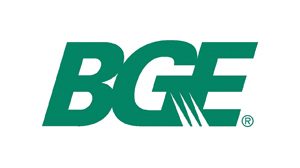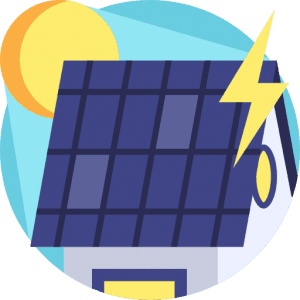Compare Electric Rates in Maryland

Thanks to deregulation, Maryland natural gas and electricity customers have a choice. They can continue getting their energy supplied by the state public utilities or they choose a competitive supplier. If you do not shop for electricity rates in Maryland, you pay a default energy supply rate known as the standard offer service. However, if you find electricity or a natural gas plan with a lower rate for your zip code, you will save money on your electric bill.
Comparing Electricity Rates in Maryland
There are five Maryland energy companies owning power lines and delivering electricity in the state of Maryland. Depending on which of them operates in your area, you get charged different electricity rates. If they are your energy provider, you are able to compare their rates against the retail electric suppliers and, when you find a good offer, simply make the switch. Remember, if you are currently locked in a fixed-rate electricity plan, exiting might result in an early termination fee.
Lowest electric rates in Maryland today:
Maryland Energy Market Data
Last updated October 2024
- The average Maryland residential electricity rate was 14.16¢/kWh(6% lower than the national average).
- The average Maryland commercial electricity rate was 12.40¢/kWh (7% lower than the national average).
- Maryland’s commercial and residential rates are lower than the regional averages.
- According to the EIA 2020 average monthly bill report, Maryland consumed 957 kWh of energy each month on average. At the predicted 14.16¢ per kWh cost, residents paid $135 every month in 2021. That’s about $406 for a three-month span!
- Maryland consumes more than five times as much energy as it produces. The state imports 97% of its electricity from outside providers. Electricity in Maryland is more expensive than the national average, but it is less expensive than in most other northeastern states.
Source: Maryland energy data from The U.S. Energy Information Administration (EIA)
| . | Main |
|---|---|
| Average Maryland Residential Energy Rate | $0.1416 per kWh (2022 data) |
| Average Maryland Commercial Energy Rate | $0.1140 per kWh (2022 data) |
| % of Renewable Energy in Maryland | 11% |
| Maryland Deregulation Status (Yes/Partial/No) | YES, both electricity and natural gas |
| Main Source of State Electricity - Maryland | Nuclear and Natural Gas - 79% |
| Average Maryland Household Energy Use - Month | 1,186 kWh per Month |
| Average Maryland Household Energy Use - Year | 14,200 kWh per Year |
| Average Maryland Monthly Electric Bill | $124.10 (2022 data) |
Maryland Energy Companies
The state of Maryland has four electric and natural gas utilities Delmarva Power and Light, Potomac Edison, Baltimore Gas & Electric (BG&E), SMECO and PEPCO. Let’s make one thing clear – these companies deliver your electricity, restore outages, and maintain power lines. This is the company you are required to call when your electricity goes out, even though your electricity supply comes from a different provider.
Baltimore Gas & Electric (BG&E)

With more than 200 years of service under its belt, BGE is the largest electric and natural gas utility in central Maryland, encompassing Baltimore City and all or part of 10 Central Maryland counties.
- Customer contact number: 1-800-685-0123
Delmarva Power

Member of the Exelon Corporation, Delmarva supplies energy to approximately 527,000 electric customers covering most of the northern Maryland territory.
- Customer contact number: 1-800-375-7117
Potomac Edison

Potomac Edison, a member of the FirstEnergy Corp group, serves about 257,000 electric utility customers in seven Maryland counties.
- Customer contact number: 1-800-686-0011
PEPCO

PEPCO supplies approximately 883,000 customers in Maryland and the District of Columbia, covering some 640 square miles of territory.
- Customer contact number: 1-877-737-2662
Southern Maryland Electric Cooperative (SMECO)

SMECO supplies electricity in Maryland to all of Charles and St. Mary’s counties, all but the northern tip of Calvert County, and the southern portion of Prince George’s County.
- Customer contact number: 1-888-440-3311
Energy Deregulation in Maryland
Maryland deregulated its energy market in 1999 with a Competition Act and two decades later, several local utilities are competing for the attention of Marylanders with cheaper prices, better customer service, and products.
The state agency that oversees the deregulated energy market is the Maryland Public Service Commission, whose role is to ensure that your interests as the customer always come first. Today, nearly all Maryland residents can electric customer choice.
What does energy choice mean? If you live in Maryland, you can compare electricity rates in your area (zip code) and switch Electric Service Companies (ESCOs) when you find the right energy plan.
Maryland Electric Choice
Maryland Electric Choice, a state-wide official program was created to encourage residents to shop for electricity and natural gas rates, find information about Maryland electric suppliers and other state energy initiatives. In it, you can compare the standard rate (Price to Compare) charged by the local utility company with a variety of competitive electricity rates offered by retail energy suppliers. All you need to is select your energy provider and estimate, what is your average monthly electricity usage.
Like Maryland Electric Choice, ElectricRate also allows you to compare available Maryland electricity rates and retail energy providers, but our web-based comparison tool also offers additional benefits.
 | Switch to your new service in a few clicks - When you enter your zip code on ElectricRate, you will not only see all rates, with the cheapest deals displayed on the top of the list, but you can also sign up immediately with just a few clicks. |
 | All the information you need in one place - As customers, we all like excellent customer service and extras. That's why at ElectricRate, we carefully review all major suppliers and compile information about customer support hours, ratings, and extra benefits that they provide, such as attractive referral programs, complementary goods, and value-add services. |
 | Get the support you need: Our team at ElectricRate is ready to provide ongoing support to customers, including helping you choose the plan that best fits your lifestyle, notifying you when your plan is about to expire and any additional support you might need. All you need to do is give us a call at 1-888-307-9636 or email [email protected] |
Maryland Energy Market Overview
Electricity in Maryland certainly isn’t a cheap affair. The combination of high average electricity rates (12.3 cents per kWh) and high average energy usage (18th highest in the US) results in the average electricity cost in Maryland being among the highest in the country or approximately $140 / month. Luckily for Maryland households and businesses, deregulation allowed competition in the electricity supply market which means the freedom to switch to a cheaper rate.
When you switch energy companies, your local electric company will continue to deliver electricity safely to your door through the state power lines. It’s also them you call in the case of an electric or natural gas emergency. The only thing that will change will be the supply portion of your monthly bill – which will now have the name of your new Electric Service Company (ESCO)/new supplier and a better supply rate!
Energy Plans & Products in Maryland
Energy plans are like shoes. One size does not fit all. Navigating through complex information about power rates can be confusing and can ultimately deter you from shopping for better Maryland energy rates. Below is all you need to know about different products that power companies in Maryland offer to customers:
| Plan | Description | What's Good? | What's Bad? |
|---|---|---|---|
| Time of Use Tariffs | You pay a different rate based on the time of day (higher rates during peak hours and lower rates during non-peak hours) |
|
|
| Renewable Energy Credits (RECs) | By purchasing 1 REC, you purchase the environmental benefits of 1MWh of renewable energy generation. |
|
|
| Green / Renewable Energy Plans |
|
|
|
| Prepaid Plans | This plan lets you pre-purchase power for your home at a set price, like a prepaid cell phone. |
|
|
| Variable Rate Plans | Your per-unit gas and electricity costs can vary at the discretion of your supplier. |
|
|
| Fixed Rate Plans | Your unit price for gas and electricity will remain the same for the duration of the plan. |
|
|
Is Switching Providers Worth It?
It can certainly be worth it! The state utility companies are constantly trying to increase the electricity rates they charge to their customers. In 2020, nearly all U.S. utilities filed rate hike proposals to be approved by their respective state regulatory commissions.
If you choose a competitive Electric Service Company (ESCO), you can avoid these rate increases by locking in a cheaper rate. However, you will only save money if the new rate is lower than your current Price to Compare (which you will find on your electric bill).
Also, remember to check if you are not locked in a fixed-rate contract. If you decided to leave your plan early, you might have to pay early termination fees, which would cancel out the savings from a cheaper rate.
How To Choose The Right Plan For Your Home
Switching to a new energy supplier might seem complicated, but we promise you – it isn’t! Follow these simple steps to find competitive rates in Maryland:
Analyze Your Current Costs
Look at the electric supply charges on your utility bill, which will be expressed in cents per kilowatt-hour. This number is called your Price to Compare and your primary objective is to find a plan with a lower number.
Review Your Current Contract and Plan
Switching suppliers in Maryland can be costly if you are the type of person that tends to skim through the fine print in your contract. For example, if you are currently on a fixed-rate electricity plan, there might be a penalty from your energy provider for switching out too early – check if you are able to switch without a fee.
Compare Energy Plans
Use our online search and shopping tool to see available electric rates for your zip code. Find the electricity provider with the lowest rate and if you like what you see, you can sign up right there and then! A pro tip – We all like good customer service. That’s why at ElectricRate.com, we only promote rates from Maryland’s reputable power providers, based on their prices, electricity plans, customer service, and extras! Before you sign up, read our review of your new supplier for your energy to avoid surprises.
Getting To Know Your Maryland Electricity Bill
There are two main charges on your Maryland electricity bills – supply charges and a transmission & delivery service (TDS) charge. Understanding what they both mean will give you more control over your spending on electric utilities and can even inspire you to find lower Maryland electric prices.
Utility Delivery Charges
The delivery charges reflect the costs of reliable transmission and safe distribution of power to your home. According to a 2015 U.S. Department of Energy report, 70% of power transmission lines are 25 years of age or older and in need of hefty investments, meaning that the delivery charges on the utility bills are bound to go up in the coming years.
Supply Charges
The supply charges of your utility bill cover the cost of generating electricity. This could, for example, be the cost of operating a nuclear power plant or the cost of setting up a solar farm or a wind farm. If you live in one of the deregulated states, you can switch energy suppliers to reduce your bill’s electricity supply charge portion. This charge on your energy bill is expressed as the price per kilowatt-hour of energy.
Factors that Affect Electricity Rates
If you are on a Maryland variable-rate energy plan, you may have noticed that your monthly bills can rise or fall regardless of the energy use your meters report. Unlike a fixed-rate plan, a variable rate energy plan depends on wholesale electricity prices which varies year-round. For this reason, let’s consider factors that we cannot control, but which affect Maryland energy rates.
Fuels
Fuels affect Maryland’s energy rates the most. In any energy plan, there are some fuels involved, unless you are switching to a green energy plan. In any case, there are various factors that affect the fuel price and, in the end, how much users pay for their electricity even with the best rates.
These fuels include a variety of products that are usually burned to get electric energy. This type of energy source includes coal, natural gas, biomass, and municipal waste. Other fossil fuel products, such as petroleum, can be burned as well, but due to a high price, utility services do not use them. With the right plan, your household will be using at least some green energy, reducing its carbon footprint and reliance on fuels.
Power Plant Prices
Power plant prices also affect electricity rates and are, at least with fixed-rate plans, updated every 6 to 12 months. Power plant processes are usually controlled by the state to ensure quality services for end-users and ensure that the maintenance is done right. Users can enjoy a reliable power service thanks to the strict measures imposed on power plants.
Every power plant costs a lot to build and join the energy market. Besides these, there are also large costs connected to the operation, management, and maintenance of power plants. All this costs money and the only way to make money with a power plant is by selling electricity to a retail supplier. Both electricity and heat can be sold, depending on the area you live in.
Local Transmission and Distribution Systems
Maryland electric rates are also affected by the local transmission and distribution system charges – also known as local utility delivery charges. This is the heading under which they show up on your electricity bill. Even if moving to a new area, the utility delivery charges stay the same because, most likely, you will be moving to an area serviced by the same local utility company.
Your utility delivery charges are tied to the number of kWhs you use, even in green energy plans. This means that if you want to save here, you should remain responsible and cut back on energy usage. Usually calling your electricity supplier on the phone and asking about the ways to save can help drive down these costs. A home energy audit is also a good solution to reduce your energy needs and avoid unexpected power bills.
Area Regulations
Your local area regulations have a big say in how much you will be paying for your energy use, even when making energy choices and sending a request to get a new electric supplier. This is because the local regulations set the minimum and maximum price at which Maryland electric suppliers can sell energy. Although the energy market is deregulated and you have the power of energy choice, the deregulation leaves some power to the state. This power should protect consumers and is a great tool to ensure the quality of work and handling matters, as well as access to an affordable early termination fee.
When you compare energy plans, they all have to follow strict guidelines connected to the Maryland electric suppliers. Although the energy market is deregulated, there are regulations controlling competition and keeping Maryland’s electricity rates affordable. If this wasn’t the case, issues, such as Delaware natural gas plans and prices, would make the whole deregulation obsolete and would compromise Maryland electricity rates.
Weather Conditions
Many questions arise on how weather conditions can cause a natural gas emergency and other shortages. As it is necessary that the power plants work even in the weather extremes, depending the weather can cause disruptions to natural gas and electricity supply as we could see in February 2021, when several natural gas suppliers experienced interruption due to frozen natural gas pipes. This led to a complete blackout and showcased important steps to be taken to weatherproof the existing infrastructure.
The same can happen when we experience extremely hot weather, as the energy use rises significantly, to meet the demand. Even the most responsible customers need to turn on their AC, for at least a fraction of the day. This makes the grid difficult to be operated, as the peak demand can be really high. Some customers, such as those on variable-rate electricity plans, can experience significant issues, as the energy price rises.
With renewable energy sources, the situation is pretty much the same. Just minutes of clouds over portions of solar plants can significantly reduce the power output of solar plants and winter with little precipitation usually means less water in hydro dams. The answer is simple: winterization of the existing infrastructure and diversification of renewable energy sources used throughout the state.
Energy Providers vs Utility Companies
If you live in a deregulated market, you should know that the energy rate you pay is actually composed of two different rates, related to two different services. All electricity plans mean paying one rate to the utility company and another rate to the power provider. Even when moving, you should take this into consideration, as it can be different in regulated areas.
In this case, an energy provider is usually a company operated by the private sector. Located in the vicinity of your new address, there are usually many energy providers or power providers. These are the companies you sign your contract with whenever you choose a new plan to power your home. These companies purchase electricity on the wholesale market in your name and send it to the grid.
Utility companies, on the other hand, ensure that the infrastructure is capable of delivering power to your home. Electricity rates in your area are dictated by the needs of this company – they use the money to maintain the network and deliver the power so that all Maryland residents can enjoy their electricity services, irrelevant of their energy plan: both variable-rate plans and fixed-rate plans work the same way.
Alternative Energy Solutions in Maryland
According to the EIA, Maryland’s renewable generation is distributed across the state and consists mostly of solar, hydro, and biomass. As a result, Maryland residents have a variety of options to choose from, if they want to switch to cleaner electricity.
 | Switching to a green electricity plan - Every provider in Maryland offers at least one partially or fully renewable electricity plan. Enter your zip code on our website will show the available green energy plans with great competitive rates. |
 | Installing a solar panel - Maryland homeowners can work together to get competitive pricing for installing solar panels. The organization Solar United Neighbors organizes Maryland neighborhoods into co-ops and offers them support throughout the solar process. |
 | Community solar energy - The local utility companies Baltimore Gas and Electric, Potomac Electric Power and Delmarva Power each have a community solar program to give access to solar energy for the consumers, without having to own a property. |
FAQs
Below are answers to some of the questions you might have about Maryland rates:
What are the current average Maryland electricity prices?
According to the Energy Information Administration (EIA), Maryland’s average residential electricity price is 11.24 cents per kWh. It varies slightly, based on which local utility company services your local place. If you shop around and switch to a retail energy provider, you might be able to find a more competitive rate and lower your energy bill.
What is the average electricity bill in Maryland?
Because of a quite high average usage (18th highest in the US), Maryland electric bills turn out to be among the highest in the country or approximately $140 / month on average.
How do I choose an energy supplier?
Don’t wait to shop around for a better electricity rate! You can compare the available rates on the official state program Maryland Electric Choice, or simply enter your zip code on our website to shop for electricity and natural gas plans. Whether you are looking for a fixed-rate plan or a variable-rate plan, renewable energy or prepaid plans, switching suppliers, or moving to a new address, we have electricity plans to fit your needs.
What is the electricity supply charge?
The supply charges of your energy bill cover the cost of generating electricity. This could, for example, be the cost of operating a nuclear power plant or the cost of setting up a solar or wind farm. In states with energy deregulation, such as Maryland, you can choose among competitive suppliers who offer a better price per kilowatt-hour, than your current one.
What is the current cost of electricity and does that number change?
The current average residential electricity price in Maryland is 11.24 cents per kWh. It doesn’t mean that that’s your price for electricity – rather, it’s an average of what all residential customers in Maryland pay. Those who have their electricity supplied by the local utility company will likely be paying default service rates which are often higher. Utility companies ask the Maryland Public Service Commission to approve Maryland electricity price hikes almost every year.
Conclusion
Marylanders have a wealth of choices when it comes to their choice of energy providers. Rather than paying higher rates to Maryland utilities, they can easily compare and switch providers online. There are many available choices – fixed-rate electricity plans for peace of mind, green plans to reduce carbon footprint, or even tax breaks and incentives to install a solar panel. If your current plan with a utility company is the default, shop around to see what’s out there!
Regardless of which Maryland ZIP code area you live in, you have the right to choose the best rate suited to your budget and energy needs. On Electricrate.com, you can find a useful tool that enables electricity shopping in a way that is not confusing and lets you browse different energy rate options. With this tool, you can easily compare energy companies in Maryland, as well as compare Maryland energy rates. With energy deregulation in place, you are sure to enjoy some of the lowest prices the market can offer.
Updated on
